Abstract
Six patients with idiopathic Parkinsonism were treated with a combination of amantadine and L-dopa and after 12 to 24 weeks amantadine was replaced by placebo for a six week period in a double-blind trial. Although there was a tendency for clinical disability ratings and scores on objective ratings of motor skills to deteriorate initially after amantadine removal, there was no significant deterioration in clinical improvement or motor performance during the period of amantadine withdrawal. Amantadine withdrawal also failed to cause any significant change in plasma concentrations of L-dopa or its metabolite 3-methoxy-dopa in these patients. In a group of 27 patients seen regularly as outpatients measurements of plasma L-dopa failed to correlate significantly with either oral dose or with clinical improvement scores. The plasma concentration of 3-methoxy-dopa, however, was on average 2.8 times higher than that of L-dopa, and there was a significant correlation between plasma levels of this metabolite and clinical improvement. It is suggested that 3-methoxy-dopa may contribute significantly to the therapeutic actions of L-dopa in Parkinsonism.
Full text
PDF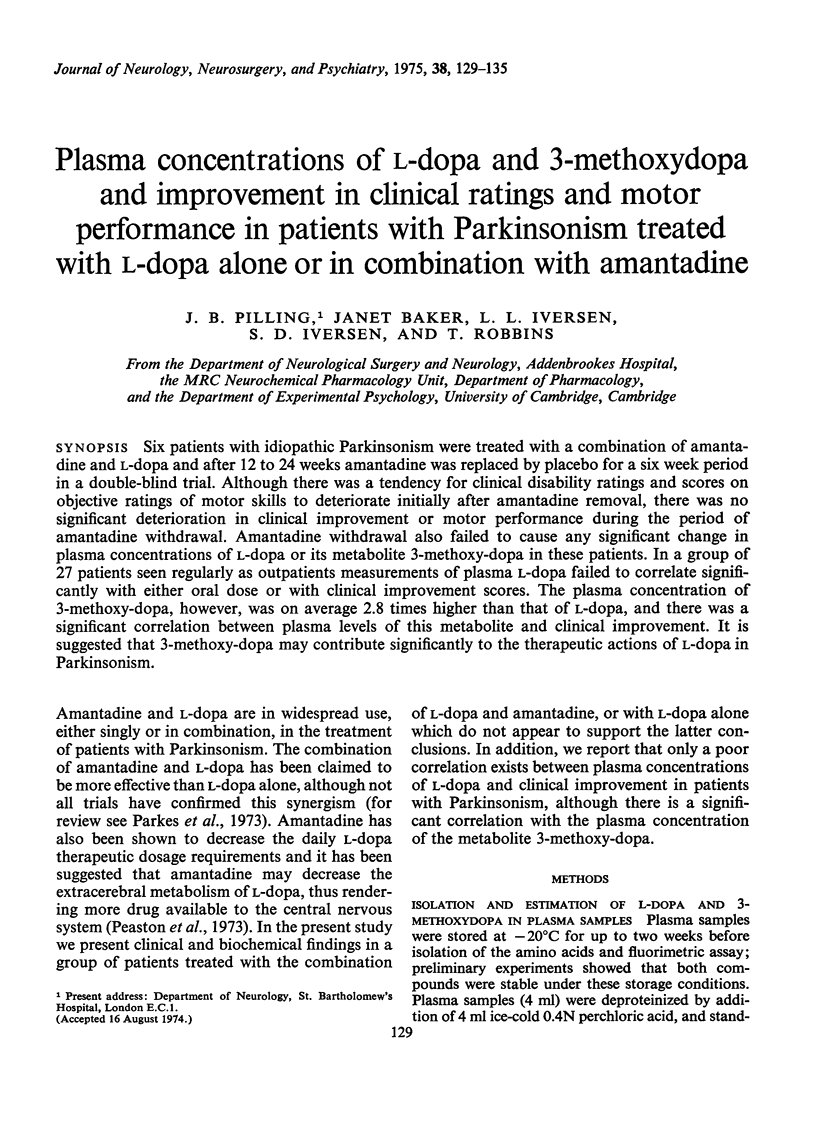
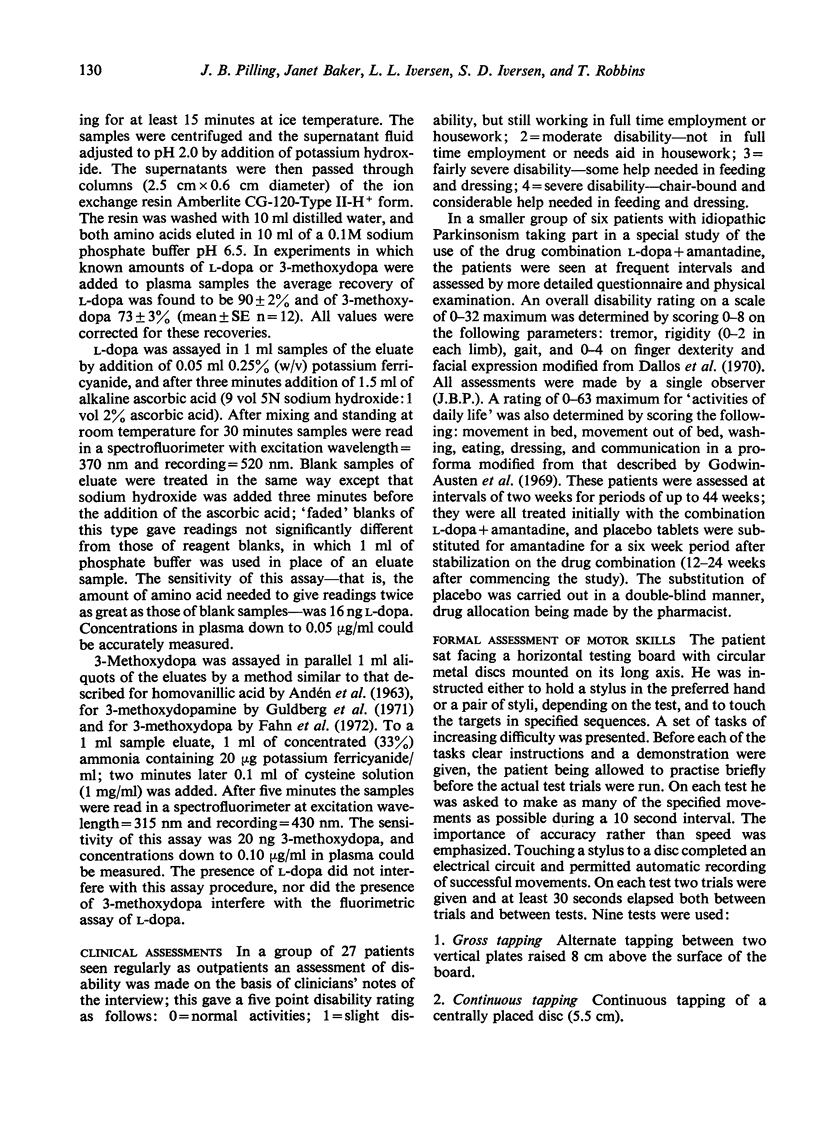
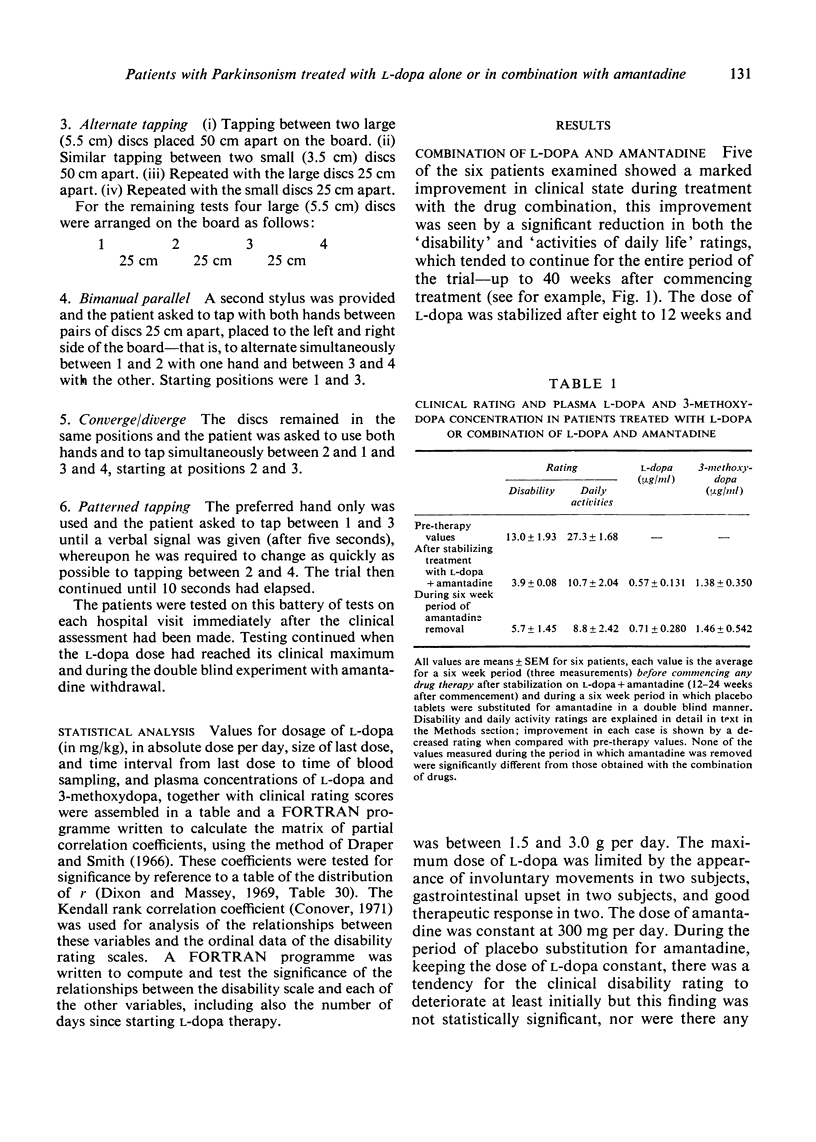
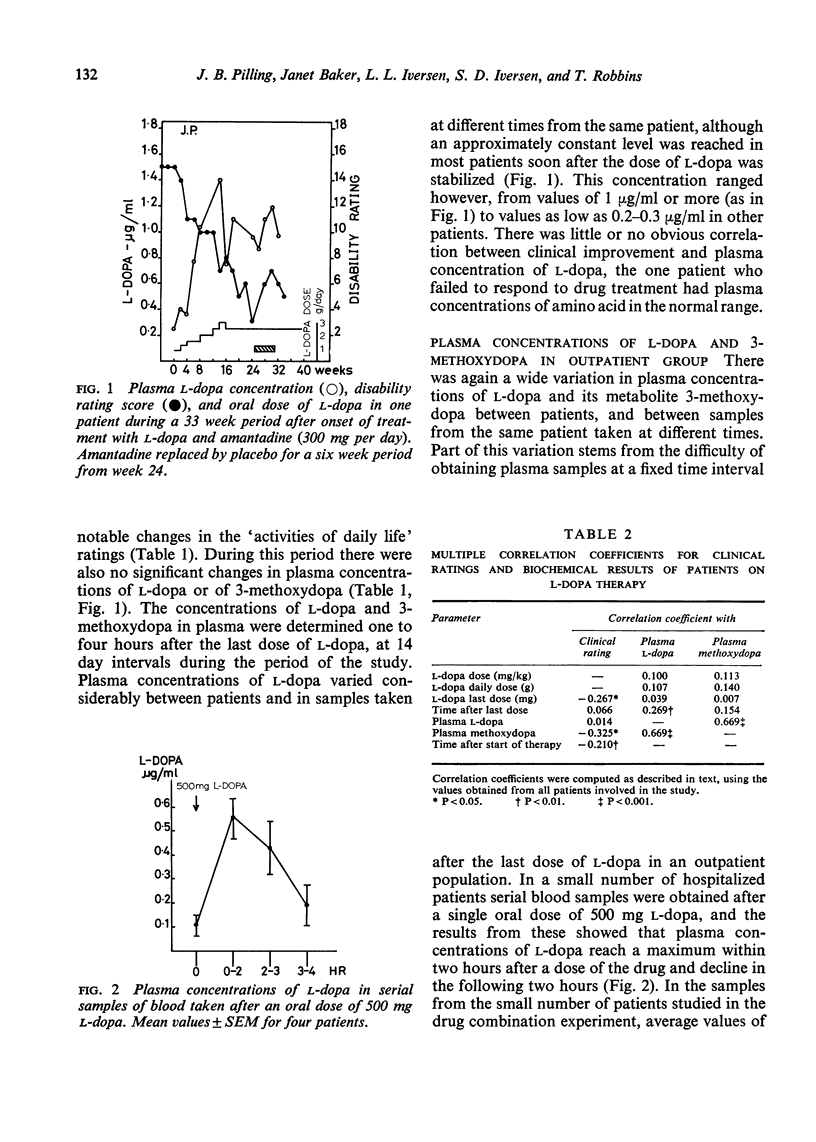
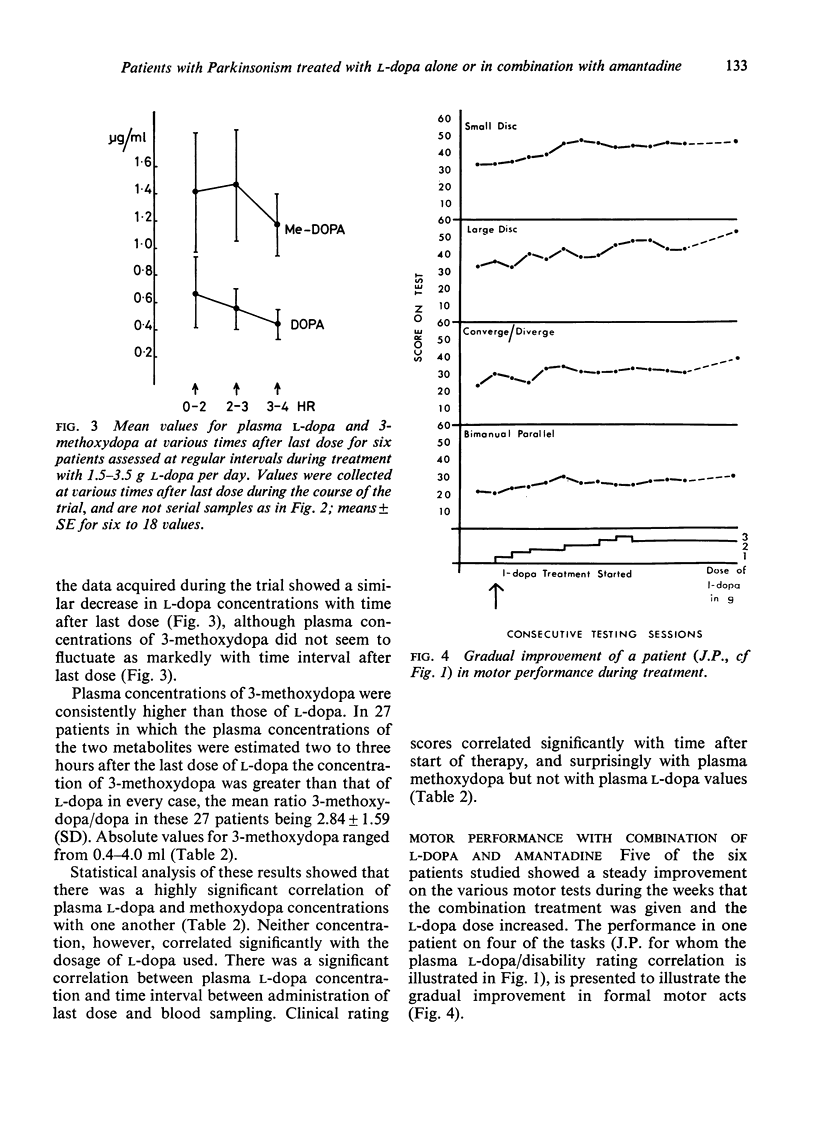
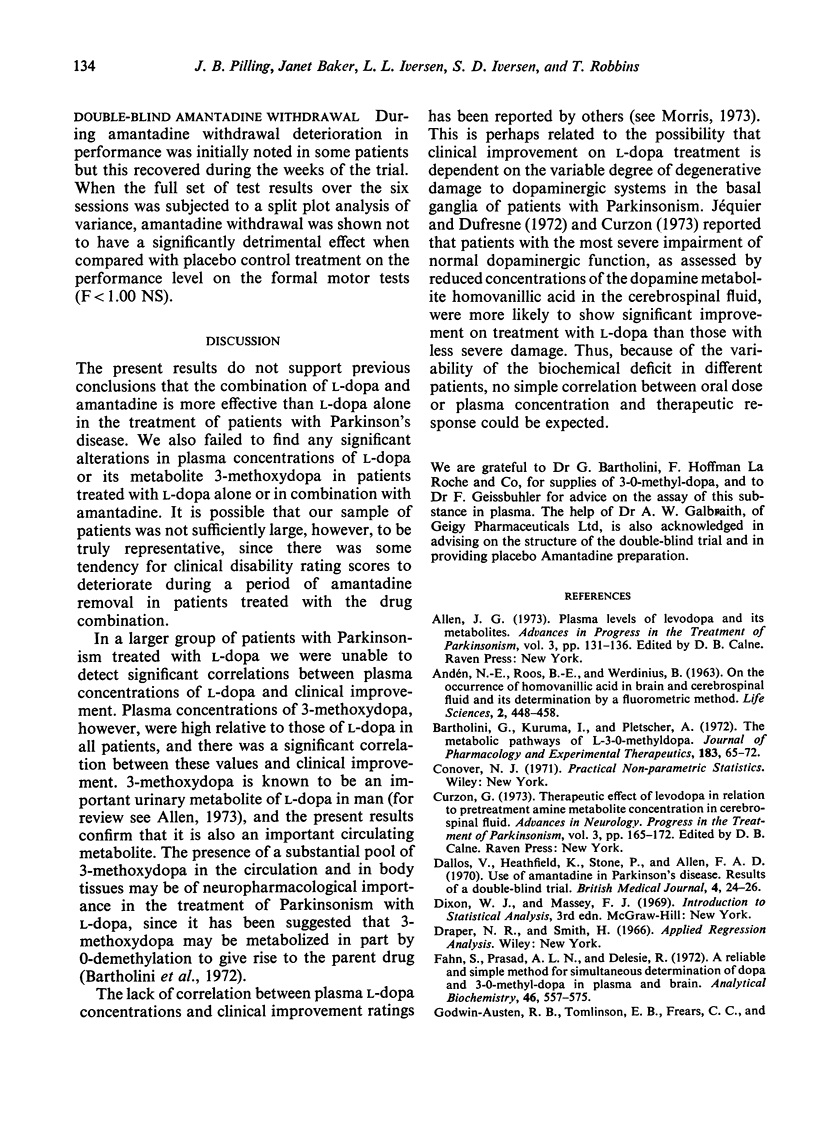
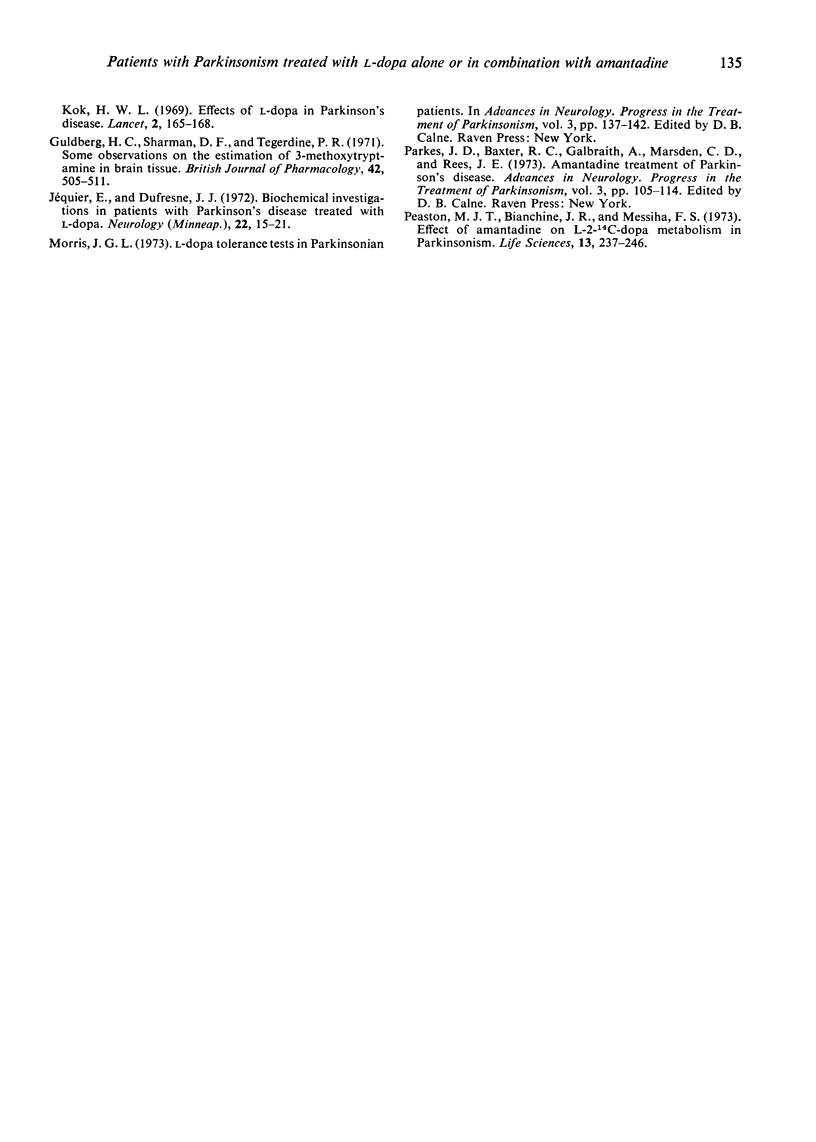
Selected References
These references are in PubMed. This may not be the complete list of references from this article.
- ANDEN N. E., ROOS B. E., WERDINIUS B. On the occurrence of homovanillic acid in brain and cerebrospinal fluid and its determination by a fluorometric method. Life Sci. 1963 Jul;(7):448–458. doi: 10.1016/0024-3205(63)90132-2. [DOI] [PubMed] [Google Scholar]
- Bartholini G., Kuruma I., Pletscher A. The metabolic pathways of L-3-O-methyldopa. J Pharmacol Exp Ther. 1972 Oct;183(1):65–72. [PubMed] [Google Scholar]
- Dallos V., Heathfield K., Stone P., Allen F. A. Use of amantadine in Parkinson's disease. Results of a double-blind trial. Br Med J. 1970 Oct 3;4(5726):24–26. doi: 10.1136/bmj.4.5726.24. [DOI] [PMC free article] [PubMed] [Google Scholar]
- Fahn S., Prasad A. L., Delesie R. A reliable and simple method for simultaneous determination of DOPA and 3-O-methyldopa in plasma and brain. Anal Biochem. 1972 Apr;46(2):557–575. doi: 10.1016/0003-2697(72)90327-2. [DOI] [PubMed] [Google Scholar]
- Godwin-Austen R. B., Tomlinson E. B., Frears C. C., Kok H. W. Effects of L-dopa in Parkinson's disease. Lancet. 1969 Jul 26;2(7613):165–168. doi: 10.1016/s0140-6736(69)91417-2. [DOI] [PubMed] [Google Scholar]
- Guldberg H. C., Sharman D. F., Tegerdine P. R. Some observations on the estimation of 3-methoxytyramine in brain tissue. Br J Pharmacol. 1971 Aug;42(4):505–511. doi: 10.1111/j.1476-5381.1971.tb07136.x. [DOI] [PMC free article] [PubMed] [Google Scholar]
- Jequier E., Dufresne J. J. Biochemical investigations in patients with Parkinson's disease treated with L-dopa. Neurology. 1972 Jan;22(1):15–21. doi: 10.1212/wnl.22.1.15. [DOI] [PubMed] [Google Scholar]
- Peaston M. J., Bianchine J. R., Messiha F. S. Effect of amantadine on L-2-14C-dopa metabolism in parkinsonism. Life Sci. 1973 Aug 16;13(3):237–246. doi: 10.1016/0024-3205(73)90022-2. [DOI] [PubMed] [Google Scholar]


